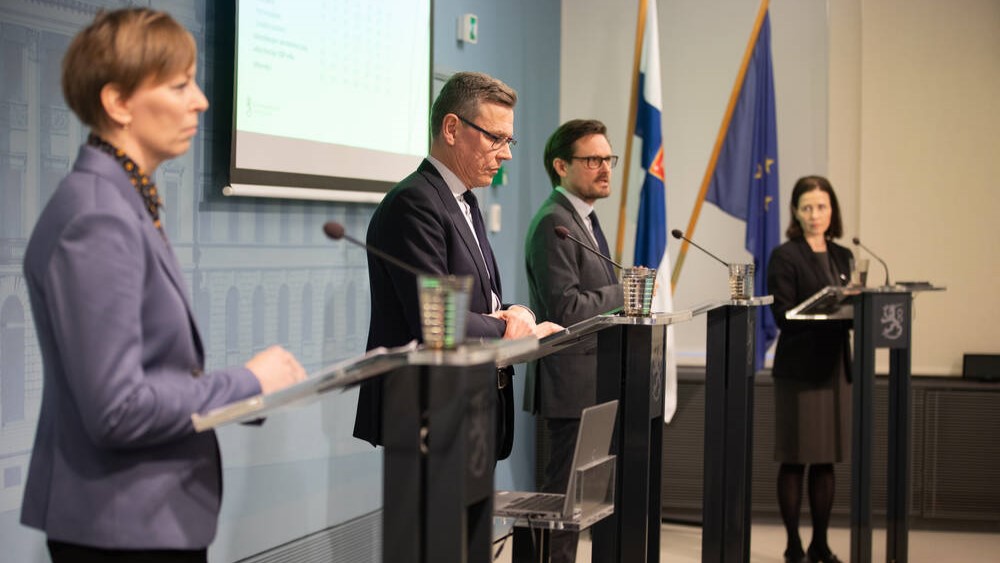Economic Survey
Finland’s economy will turn to growth after the recession

Due to a decline in investments and household consumption, Finland’s economy is in recession in 2023. Next year, slowing inflation and a downward turn in interest rates, combined with moderately strong development of household incomes, will turn GDP to growth. Weak economic development combined with rapid expenditure growth will keep general government persistently in deficit. The general government deficit will be 3 per cent or worse for several years, the Finance Ministry estimates in its Economic Survey, published on 19 December.
Finland’s economy has been weak in the latter part of the year and Finland’s GDP will contract this year by 0.5 per cent. In the early part of the year, the economic situation was weaker than previous estimates, and in the third quarter output clearly decreased. Construction is in the poorest situation.
The recession will recede and the economy will start to grow in 2024. Slowing inflation and a fall in interest rates, combined with moderately strong household income growth, will increase the purchasing power of households. Private consumption is set to return to subdued growth, and growth will strengthen in 2025. The fall in interest rates will support investments, as will investments in the energy transition and defence. In 2024, GDP will grow by 0.7 per cent. Growth will strengthen to 2.0 per cent in 2025 and to 1.6 per cent in 2026.
"Even if economic conditions turn more favourable next year, Finland’s economy will face the future yin less than good shape. The outlook for general government finances has been bleak for a long time, and even now there is no light to be seen. Unpleasant surprises as well as rising prices and interest rates have blocked the circulation of the economy in a situation where Finland’s economy was already in need of an angioplasty," says Director General Mikko Spolander.
Slowing inflation and falling interest rates will boost consumption and investments
Inflation has slowed rapidly this year. Inflation will still be 2 per cent on average next year, and will fall below 2 per cent in 2025 and 2026. Real earnings will turn to growth in 2024. Growth in household purchasing power growth will remain subdued, however, as weakening employment and cuts in social benefits curb growth in incomes. From 2025 onwards, household purchasing power and consumption growth will accelerate.
The construction of new housing is in sharp decline and this will continue in 2024. However, there is demand for housing due to immigration and domestic internal migration. The downturn in interest rates will stimulate the housing market and new production will increase from 2025 onwards. Despite the challenging short-term outlook, companies will have a strong need to invest in the next few years and expectations for production investments are positive.
Employment will fall, but remain high
In 2023, exports from Finland will fall, but significantly less than imports. Foreign trade is clearly supporting the economy this year. Next year, it is expected that exports will already be growing, as world trade recovers and Finland’s cost competitiveness is in good shape.
With output decreasing, labour demand will decline in 2024, employment will temporarily fall and the unemployment rate will rise to 7.5 per cent. In 2025 and 2026, economic growth will be quite strong and the number of people in employment will increase by nearly 1 per cent per year. Employment growth will also be underpinned by the Government’s measures to increase labour supply, the first of which will take effect next year.
Weak economic development and rapid expenditure growth will keep general government persistently in deficit
Finland’s general government finances are taking a turn for the worse. The general government deficit is estimated to be 2.5 per cent of GDP this year. The deficit will widen next year to 3.5 per cent due to slow tax revenue growth, on the one hand, and rapid expenditure growth, on the other.
Contingency expenditure decided on earlier, large investments and the sharp increase in prices and wages will also keep expenditure growth brisk in the near future. The general government deficit will improve to around 3 per cent of GDP in the coming years as the Government’s adjustment measures start to bite and the economy and employment begin to grow towards the end of the outlook period.
The central government deficit will remain substantial throughout the outlook period, and the deficits are not expected to improve in the municipal sector or in the wellbeing services counties. Without the substantial surplus in the social security funds, Finland’s general government deficit would be significantly deeper.
As a result of the central government and local government deficits as well as slow economic growth, the debt ratio will continue to increase, and it is not on track to decline given the foreseeable economic development.
Inquiries:
Mikko Spolander, Director General, tel. +358 295 530 006, mikko.spolander(at)gov.fi
Janne Huovari, Director, Head of Unit, tel. +358 295 530 171, janne.huovari(at)gov.fi (real economy)
Jenni Pääkkönen, Director, Head of Unit, tel. +358 295 530 131, jenni.paakkonen(at)gov.fi (general government finances)